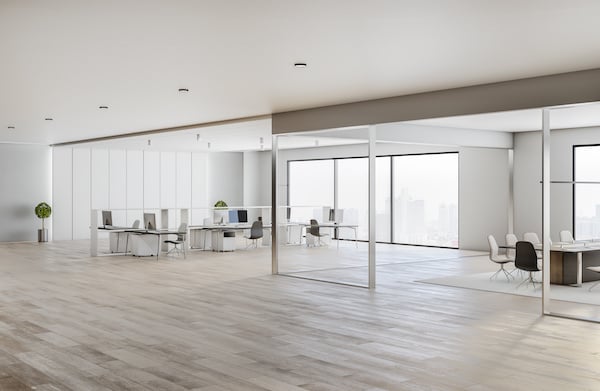How selecting the right flooring affects office productivity.

As flooring experts, we firmly believe that the design of an office space plays a vital role in enhancing productivity and fostering a positive work environment. While we often focus on elements like furniture and lighting, the flooring choices we make can significantly impact the overall ambiance and efficiency of the workspace. In this blog post, we will explore how different flooring materials and colors can greatly influence productivity in an office setting, empowering you to make informed design decisions for your next project.
- Flooring Materials: Selecting the Foundation for Success
a) Carpeting for Comfort and Acoustics: Carpeting is a popular choice for office spaces seeking to create a warm and comfortable atmosphere. The softness of carpet reduces noise levels, absorbing sound and minimizing distractions. Additionally, carpeting provides underfoot cushioning, reducing fatigue and increasing employee comfort, which in turn enhances productivity.
b) Hardwood Elegance for a Professional Environment: Hardwood flooring exudes sophistication and professionalism, making it an excellent choice for executive offices and formal workspaces. Its timeless appeal and durability can create a sense of prestige, positively impacting the mindset and motivation of employees. Furthermore, hardwood is easy to clean and maintain, contributing to a hygienic and healthy work environment.
c) Versatile Vinyl for Resilience and Design Options: Vinyl flooring offers a wide range of design possibilities and is an ideal choice for areas that require resilience and durability, such as high-traffic zones and collaborative spaces. It is resistant to stains, water, and wear, making it easy to maintain. With advancements in technology, vinyl can mimic the appearance of various materials like hardwood or stone, enabling you to achieve the desired aesthetic while benefiting from its practicality.
- The Influence of Color: Setting the Tone for Productivity
a) Stimulating Vibrancy with Bold Colors: In creative and dynamic work environments, incorporating bold and vibrant colors into the flooring can promote a lively and energetic atmosphere. Shades of red, orange, or yellow can stimulate creativity, enthusiasm, and encourage active engagement. However, it's important to strike a balance and use these colors as accents rather than overwhelming the entire space.
b) Calming Serenity with Neutral Tones: For offices that require a serene and focused environment, neutral tones such as beige, gray, or soft pastels can create a calming effect. These colors promote concentration and reduce distractions, allowing employees to maintain their focus and productivity levels. Neutral flooring choices also provide versatility when it comes to other design elements, such as furniture and wall colors.
c) Timeless Elegance of Classic White: White flooring can evoke a sense of purity, spaciousness, and modernity. This versatile color choice can create a clean and uncluttered aesthetic, enhancing visual appeal and promoting a sense of clarity. However, it's important to consider maintenance requirements, as white flooring may require more frequent cleaning and care to preserve its pristine appearance.
Conclusion: When designing office spaces, the flooring choices we make should not be underestimated. The selection of appropriate materials and colors can greatly influence productivity levels and contribute to a positive work environment. By understanding the impact of different flooring options, from carpeting to hardwood and vinyl, as well as the psychological effects of color, architects can create spaces that inspire, engage, and support the success of individuals and teams within an office setting. So, let's embrace the power of flooring design and craft workspaces that foster productivity and drive success.
